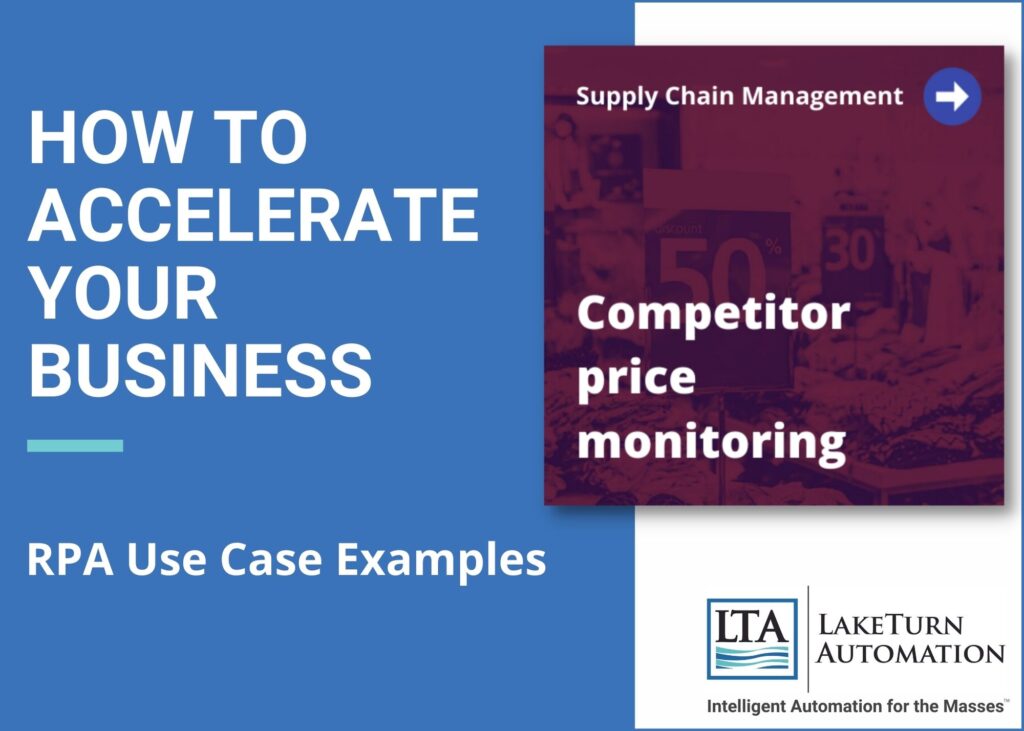Amazon has deployed cutting-edge AI tools to change product prices 2.5 million times a day (the avg item changes price every 10 minutes), which has resulted in a 25% boost in AMZN profits. Without these tools, SME’s must manually attempt to monitor prices with limited success. Fortunately, RPA can help level the pricing playing field.
As most SME/SMB’s don’t have Amazon-level resources at their disposal, they typically track their competitor’s pricing manually via website research, if they track at all. Manual competitor price research is very labor-intensive and inefficient.
According to a study by PriceMole.com, the number of SKUs a pricing analyst can manually monitor during a 3-hour research session is 100-500. For comparison purposes, a software bot built using Robotic Process Automation (RPA) can research and compare 5,000-10,000 competitor SKUs during the same 3-hour timespan (and can also effortlessly monitor 24/7/365 with zero errors).
After competitor pricing research identifies a pricing discrepancy, you then need to update the price master file(s) in your ERP system. Per Pricemole.com research, a pricing analyst can reprice 20-50 SKUs per hour. During the same hour, an RPA software bot can update the ERP price on 750-1,200 items (and, as mentioned above, a bot can continue updating SKUs 24/7/365 with zero errors).
Utilizing RPA, the manually intensive Competitor Price Matching process can be re-engineered as follows:
- Using a SKU research database (ERP report, Excel, etc.) and a listing of competitor website URL’s, an unattended bot navigates to each competitor’s website and retrieves the current price for each item
- If necessary, the bot can also automatically update VPN settings between searches to assist with high-transaction website IP monitoring
- After obtaining the competitor’s current price, the bot then updates the SKU research database with updated retail pricing
- When the pricing research is completed, the bot emails a listing of competitor price discrepancies to the pricing analyst for review
- The pricing analyst reviews the discrepancies and tags the SKUs that should be updated in the ERP system. When complete, the pricing analyst emails this file back to the bot for processing
- Using the approved pricing file emailed from the analyst, the bot updates each SKU record in the ERP system to reflect the new price
- When the price changes are complete, the bot runs an ERP Price Change Report and emails it back to the pricing analyst for review and audit support
As you can see, turbocharging your price monitoring process does not require a multimillion-dollar AI investment. By simply automating and streamlining your current competitor price monitoring process (as shown above), you can rapidly reduce this tedious and time-consuming manual process from hours to minutes; all while lowering costs and boosting profits.
Contact us us for help in conquering your competitor monitoring, and gain the edge in today’s ultra-competitive (and price-sensitive) marketplace.
